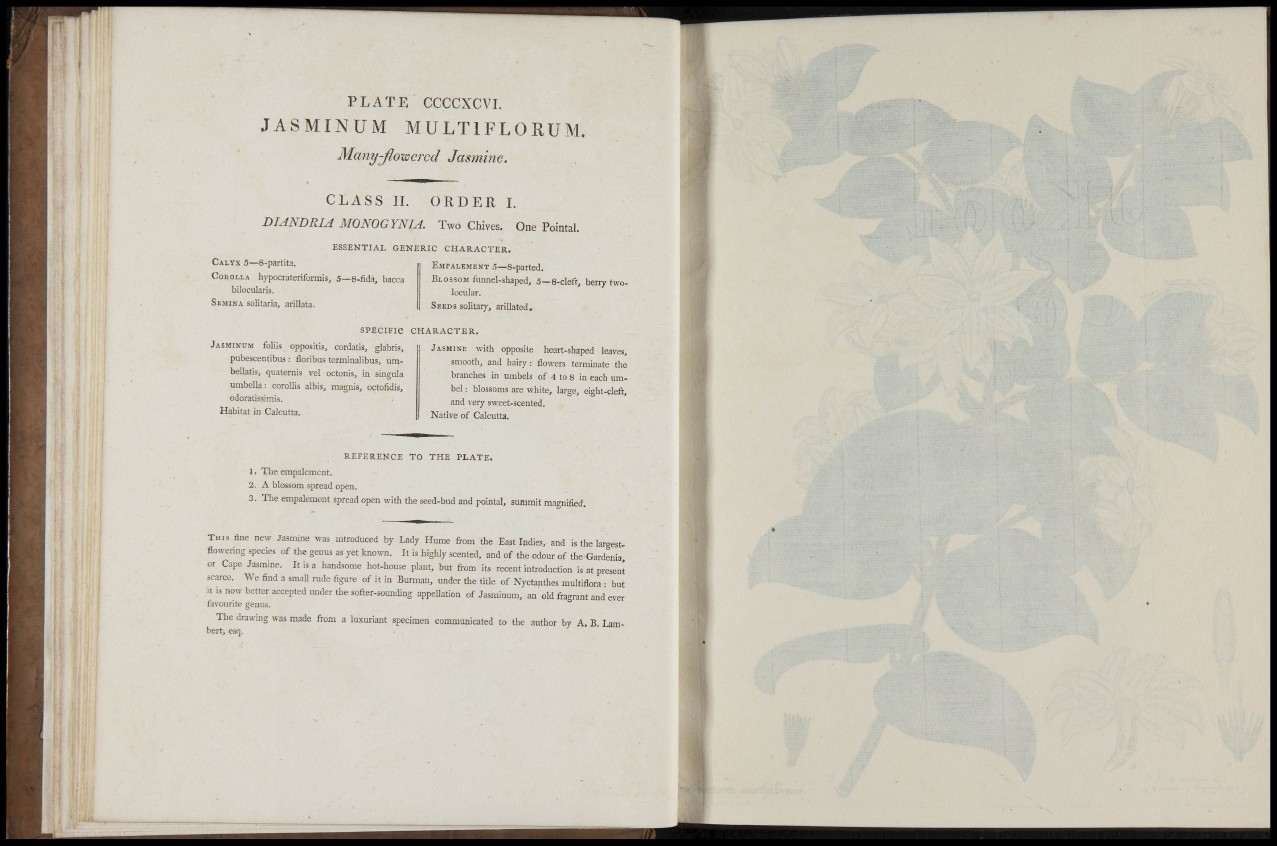
PLATE CCCCXC VI.
JASMINUM MULTIFLORUM.
Many-flowered Jasmine.
CLASS IL ORDER I.
DIANDRIA MQNOGYNIA. Two Chives. One Pointai.
CALYX 3—8-partita.
COROLLA hypocrateriforrais^ 5—8-fida, bacca
bilocularis.
SEMINA solitaria, arillata.
ESSENTIAL GENERIC CHARACTER.
EMPALEMENT 5—8-parted.
BLOSSOM funnel-shaped, 5—8-clefr, berry twolocular.
SEEDS solitary, arillated.
SPECIFIC CHARACTER.
JASMINUM folils oppositis, cordatis, glabris,
pubescentibus : floribus terminalibus, umbellatis,
quaternis vel octonis, in singula
umbella; coroUis albis, magnis, octofidis,
odoratissimis.
Habitat in Calcutta.
JASMINE with opposite heart-shaped leaves,
smooth, and hairy: flowers terminate the
branches in umbels of 4 to 8 in each umbel
: blossoms are white, large, eight-cleft,
and very sweet-scented.
Native of Calcutta.
REFERENCE TO THE PLATE.
1. The empalement.
2. A blossom spread open.
3. The empalement spread open with the seed-bud and pointai, summit magnified.
T H I S fine new Jasmine was introduced by Lady Hume from the East Indies, and is the largest,
flowering species of the genus as yet known. It is highly scented, and of the odour of the Gardenia
or Cape Jasmine. It is a handsome hot-house plant, but from its recent introduction is at present
scarce. We find a small rude figure of it in Burman, under the title of Nyctanthes multiflora • but
u IS now better accepted under the softer-sounding appellation of Jasminum, an old fragrant and ever
favourite genus.
The drawing was made from a luxuriant specimen communicated to the author by A. B. Lambert,
esq.